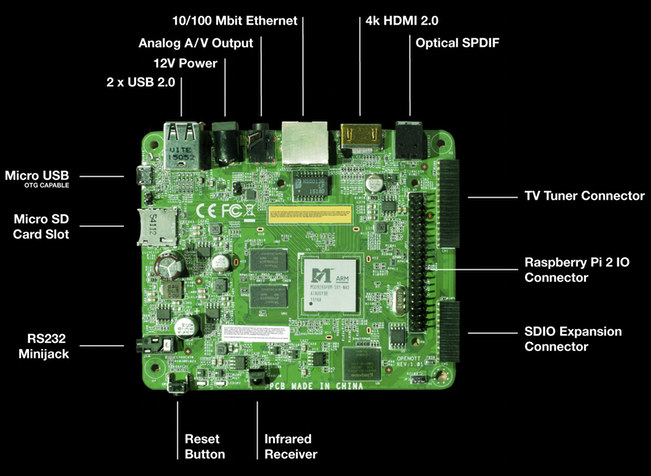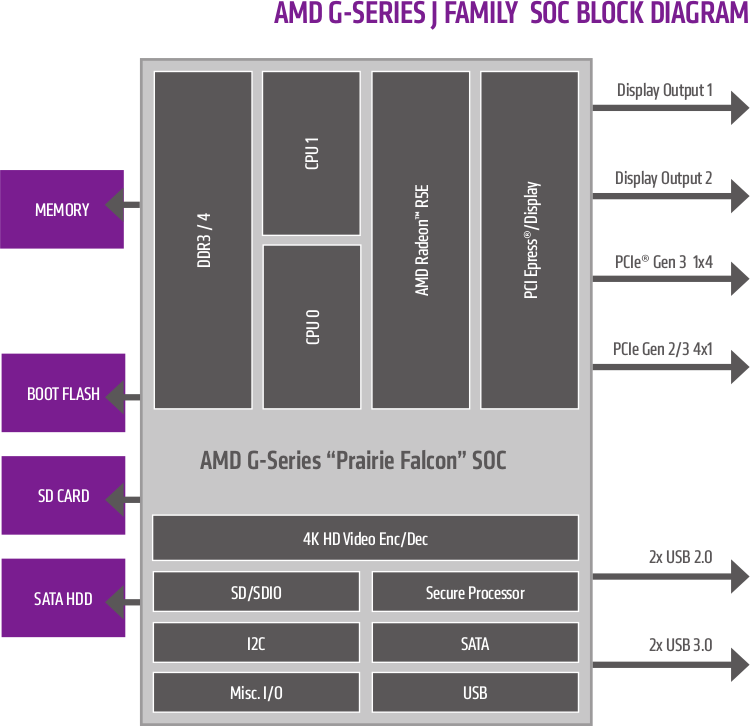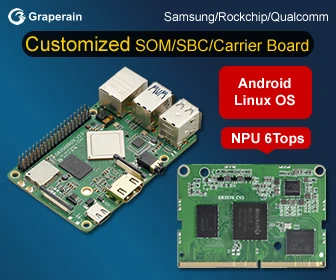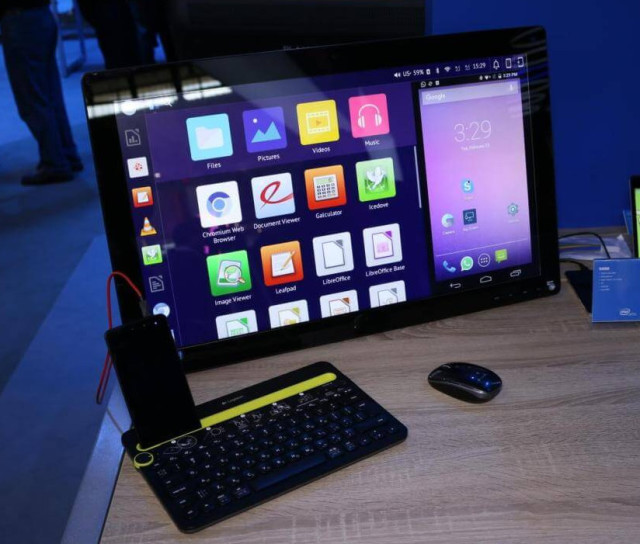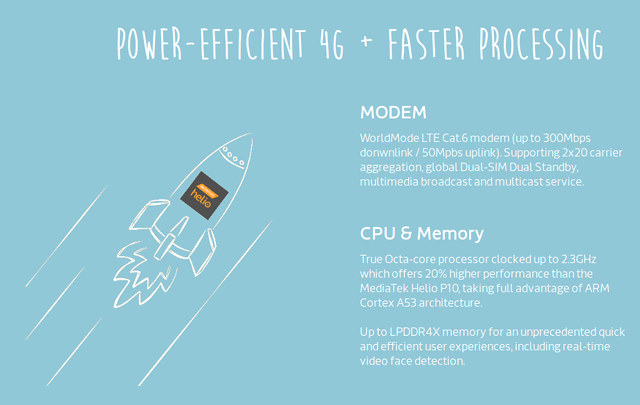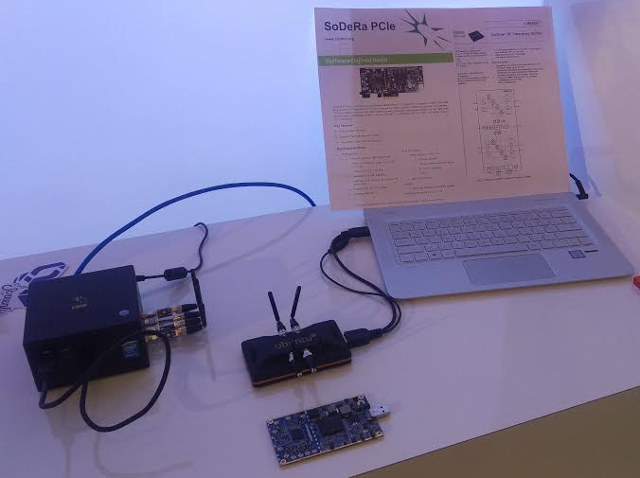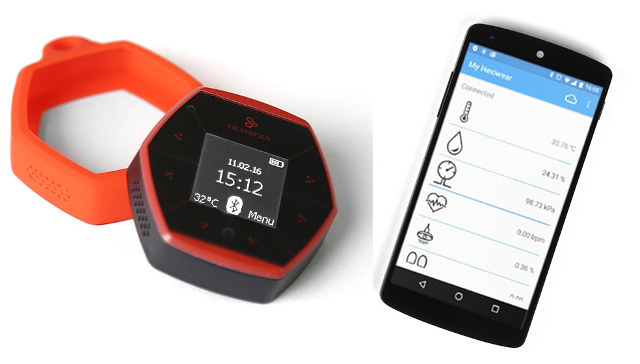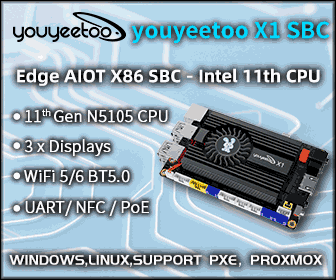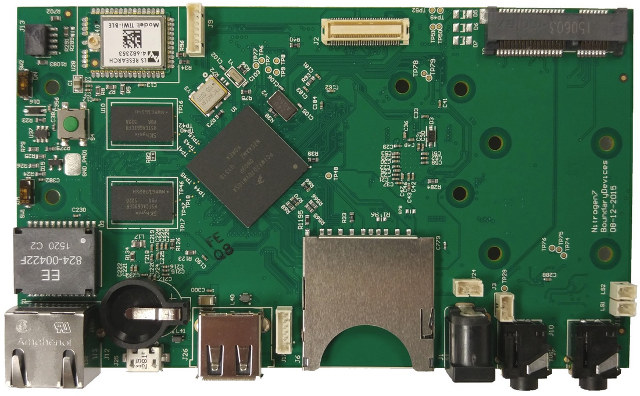Futarque A/S, a Danish company specializing in digital TV (tuners, IPTV), DVD and Blu-ray solutions, has developed the Rho Board powered by Mstar MSO9280 quad core ARM Cortex A7 processor with 1GB RAM and 4GB NAND flash, and featuring HDMI 2.0 output, a Raspberry Pi 2 compatible expansion header, and a TV tuner connector for an optional DVB-T2/C tuner. Rho board specifications: SoC – Mstar MSO9280PBM quad core Cortex A7 processor with an hexacore (4+2) Mali-450MP GPU System Memory – 1GB DDR3-1666 Storage – 4GB eMMC flash + micro SD slot up tp 128GB Video Output – HDMI 2.0 and AV ports Audio Output – HDMI, AV and optical S/PDIF Video Codec – MPEG 1/2, 4K @ 60 fps AVC and 4K @ 30 fps H.265 Connectivity – 10/100M Ethernet USB – 2x USB 2.0 ports, 1x micro USB port Expansion 40-pin “Raspberry Pi” header TV tuner connector SDIO expansion […]
AMD Launches Embedded G-Series J Family of Low Power Low Cost Processors with HDMI 2.0 and 4K HEVC Decode
If you want 4K multimedia features like HDMI 2.0 and 4K H.265 video decoding @ 60 fps at a reasonable price point, ARM is basically the only game in town with Rockchip RK3229 and Amlogic S905 TV boxes in the low end segment ($30 to $40) and on the other side of the spectrum SoCs such as Nvidia Tegra X1 used in the Shield Android TV box for around $200. But AMD has now added the J family to its G-series embedded processor with two x86 cores, AMD Radeon GCN core, and multimedia capabilities including HDMI 2.0 and 4K HEVC decoding, with the processors targeting thin clients, IP set-top boxes and TVs, casino gaming, industrial control and automation, digital signage, and communications networks. Key features of AMD G-Series J family processors: 2x “Excavator” x86 cores with 1MB shared L2 cache AMD Radeon R5E graphics (up to 3CUs) with support for […]
Intel Showcases Mobile & Desktop “Convergence” with Android and Debian Linux on an Atom x3 Smartphone
MaruOS is an operating system combining Android and Debian Linux that – until recently – was developed by a single developer for Qualcomm Snapdragon 800 (ARM) based Nexus 5 smartphones, and use Android on the go, while switching to Debian when the phone is connected to a larger display and a keyboard and mouse. It turns out Intel had the same idea, and they worked on an Intel Atom x5 smartphone with 2GB RAM running both Android Lollipop in mobile mode, and Debian Linux as desktop mode when connected to a keyboard dock. Intel does not talk about convergence, but instead calls it “Big Screen Experience”. Based on the picture above taken by WinFutures.de at Mobile World Congress 2016, it appears you can also display both Debian and Android operating systems side-by-side if you wish to. They’ve also shot a video (in German) showing the smartphone run Android, and after […]
Mediatek Helio P20 Octa-core Cortex A53 SoC is Manufactured with 16nm Process, Supports LPDDR4X Memory
Mediatek has gotten used to releasing many different processors, often with one slight differences such as support for different screen resolutions, but the company’s latest Helio P20 octa-core Cortex-A53 processor, despite looking pretty similar to Helio P10 (MT6755) and X10 (MT6795), does confirm lower process nodes are now available in entry-level to mid range parts since it’s manufactured using a 16nm process, and the application processor also supports up to 6GB LPDDR4X memory which drops the voltage from 1.1V to 0.6V for even lower power consumption. LPDDR4X is said to provide 70% more bandwidth and 50% lower power consumption compared to LPDDR3. MediaTek Helio P20 (LP4) specifications: CPU – 8x ARM Cortex-A53 @ up to 2.3GHz GPU – Mali-T880MP2 @ 900MHz Memory – Up to 2 x LPDDR4X 1600MHz (up to 6GB) + 1x LPDDR3 933Mhz (up to 4GB) Storage – eMMC 5.1 flash Display IF – 2x MIPI DSI […]
Canonical Introduces SoDeRa Software Defined Radio Solution for Base Stations and IoT Gateways
Canonical and Lime Micro have jointly announced SoDeRa low-cost software defined radio (SDR) which can be programmed to support any type of wireless standard including UMTS, LTE, LoRa, Bluetooth, Zigbee, RFID, Digital Broadcasting, and more, and aiming at helping operators reducing costs & complexity, while speeding up time to market and providing greater flexibility. The kit will include a board with the following specifications: FPGA – Altera Cyclone IV EP4CE40F23 Altera FPGA (compatible with EP4CE30F23) System Memory – 256 MB DDR2 SDRAM RF Lime Microsystems LMS7002M Transceiver with continuous Frequency range of 100 kHz – 3.8 GHz 4 x TxOut and 6 x RxIn U.FL connectors for RF cables Power Output (CW): up to 6.5 dBm Wi-Fi, 2G, 3G, LTE, any other air interfaces USB – 1x micro USB3 via CYUSB3014-BZXC Cypress Microcontroller for control, data transfer and power Misc – Status LEDs, RGB LEDs, 4x switches Dimensions – 100 mm x […]
Hexiwear is an Open Source Wearable Development Kit Expandable with Add-on Boards (Crowdfunding)
MikroElektronika has designed Hexiwear, a wearable development kit that you can wear and hack as a smartwatch thanks to an (optionally) included wristband, or use a an IoT development kit thanks to its docking station taking up to three “Click” boards among a choice of over 180 modules. . Hexiwear hardware specifications: MCU – NXP Kinetis K64x ARM Cortex-M4 MCU @ 120 MHz with 1MB Flash and 256KB SRAM Storage – 8 MB Flash memory Display – 1.1” full color OLED display with capacitive touch Connectivity – Bluetooth 4.0 LE and 802.15.4 via NXP Kinetis KW4x Cortex-M0+ wireless MCU Sensors -3D accelerometer and magnetometer (NXP FXOS8700CQ), 3-Axis gyroscope (NXP FXAS21002), pressure sensor (NXP MPL3115A2R1), light-to-digital converter, humidity and temperature sensor, heart-rate sensor (HRM) USB – micro USB cable for power and charging Misc – RGB LED, haptic feedback engine, docking connector Battery – 190 mAh 2C Li-Po battery; 600 mA […]
Makibes F69 IP68 Smartwatch & Fitness Tracker is Designed for Swimming
The market is flooded with wearables such as smartwatches and fitness trackers that all track activities (walking/running) with more or less accuracy, and while some offer good IP67 or IP68 ingress protection rating, or even better 5ATM rating, allowing them to be used in water, I have not found many that can actually track swimming patterns, especially among the cheaper ones. But that’s exactly what Makibes F69 sports smartwatch promises. Makibes F69 specifications: MCU/Memory/Storage – TBD Display – 1″ round capacity touchscreen display, 128×128 resolution, always on Connectivity – Bluetooth 4.0 LE Sensors – 3-axis accelerometer and gyroscope, heart rate monitor Battery – 180 mAh charged via magnetic dock good for 6 days in power saving mode, 4 days in “healthy” hear rate mode, and 30 hours using the HRM in sports mode. Dimensions – 38 x38 x 10 mm (stainless steel case, silicon band) Weight – 34 grams IP […]
Boundary Devices Nitrogen7 Single Board Computer is Powered by NXP i.MX7 Processor
While several system-on-modules based on Freescale/NXP i.MX7 processor have been announced such as Compulab CL-SOM-iMX7, or TechNexion PICO-IMX7-EMMC, I had not seen many single board computers or development boards based on the new processor, apart from Freescale i.MX7 96Boards by Arrow Electronics which was scheduled for Q4 2015, but has yet to launch. Boundary Devices Nitrogen7 board is another option that’s available now (in limited quantities) with NXP i.MX7 Cortex A7+Cortex M4 processor, 1GB RAM, 4 to 64GB eMMC, wired and wireless connectivity, and expansion headers. Nitrogen7 board specifications: SoC – Freescale i.MX7 single or dual ARM Cortex-A7 processor @ up to 1GHz + ARM Cortex-M4 MCU + 2D graphics engine System Memory – 1GB DDR3L Storage – 4GB eMMC flash (expandable to 64GB), 2MB Serial NOR Flash, SD card slot Connectivity – 1x 10/100/1Gb Ethernet, WiFi 802.11 a/b/g/n, Bluetooth 4.1 (TiWi-BLE combo module) Display – 24-bit RGB (via expansion […]


